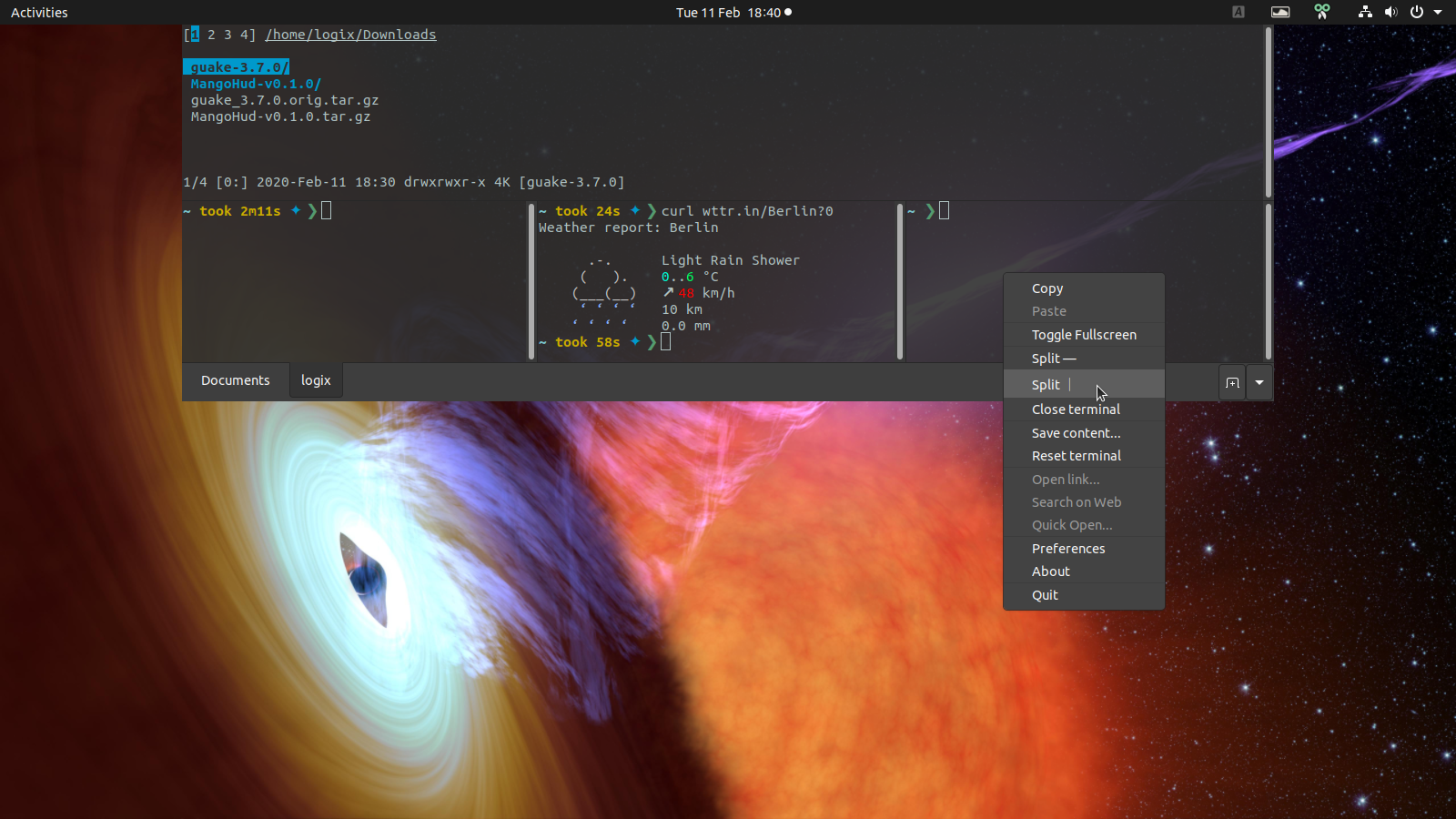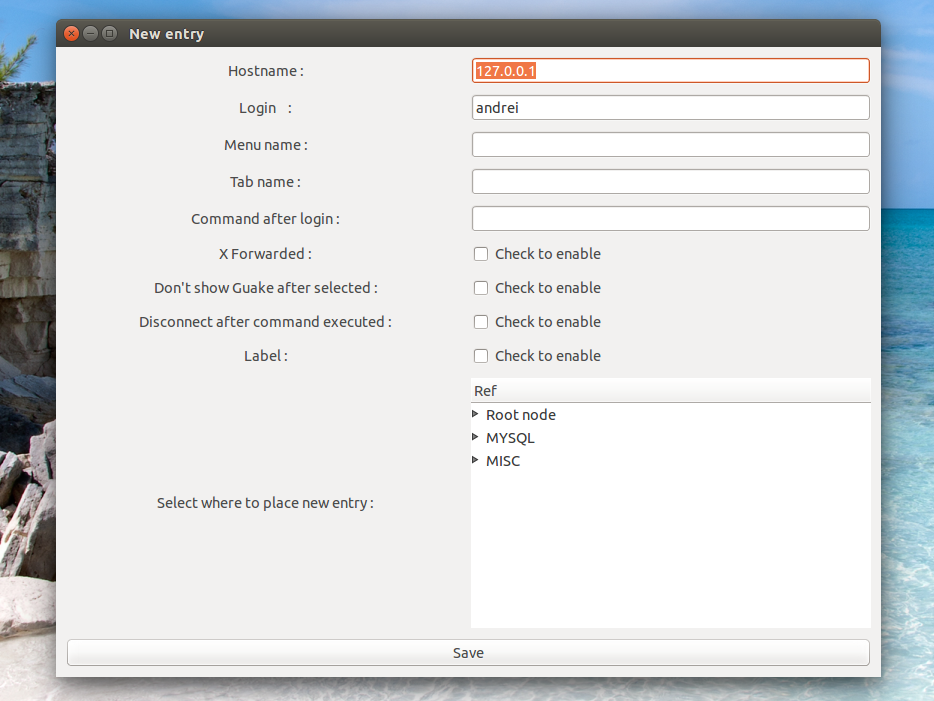

For someone like me who needs to switch between GUI and Console very often, Guake is a boon. This Project is not too young and not too old, hence has reached a certain level of maturity and is quite solid, and works out of the box. Run Guake Preferences either by running it from Application Menu or by running the below command. Next is to look into Guake Properties to edit settings as per requirements. If your wallpaper or working windows color doesn’t match you may like to change your wallpaper or reduce the transparency of the Guake terminal color.

$ sudo zypper install guake Īfter installation, start the Guake from another terminal as: $ guakeĪfter starting it, use F12 (Default) to show/hide the terminal on your Gnome Desktop. Here, we will be installing Guake on Debian derivatives and RHEL-based Linux distributions as shown. Guake is available to be installed on most of the Linux distributions from the repository or by adding an additional repository. Run a script when Guake starts via Guake Preferences.

Plenty of color palettes included fixed and recognized.Support for hotkeys, tabs, background transparency makes it a brilliant application, a must for every Gnome User.Appears when you call and disappear once you are done by pressing a predefined hotkey.Smooth integration of terminal into gnome environment.Functional, Powerful, and Good Looking UI.Yakuake which stands for Yet Another Kuake, a terminal emulator for KDE desktop environment, and Tilda which is a GTK+ terminal emulator are also inspired by the same slide up/down console of the computer game Quake. Important to mention that Guake is not the first of this kind. Guake is inspired by a console in the computer game Quake which slides down from the top by pressing an especially Key (Default is F12) and then slides up when the same key is pressed. Written from scratch mostly in Python and a little in C this application is released under GPLv2+ and is available for Linux and alike systems. Guake is a drop-down terminal for GNOME Environment. So finally the article is here, where I discuss Guake features and show how to install on RHEL-based Linux distributions and Debian derivatives followed by quick testing.

I’d known this application nearly one year ago but somehow I could not write on this and later it was out of my mind until I heard it again. Though this is not the first time I have learned about Guake. Last day while surfing the web, I came across a terminal namely ‘ guake‘ which is a terminal for GNOME.


 0 kommentar(er)
0 kommentar(er)
